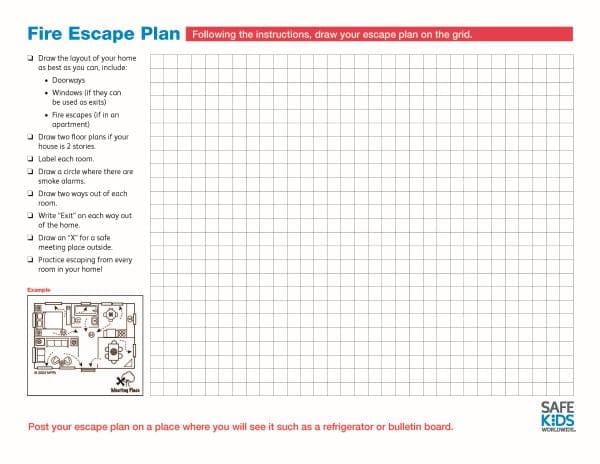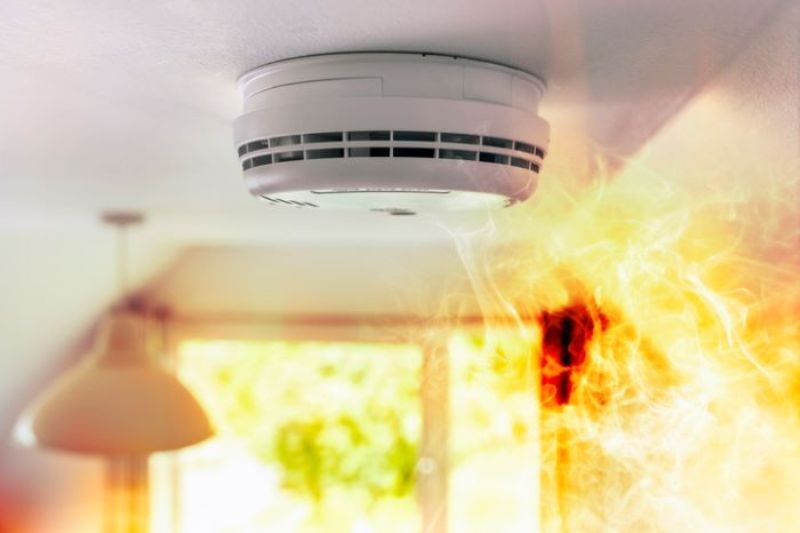Fire Drill: How to Prep Your Family to Prevent and Escape Home Fires
As we welcome 2024, many of us are filled with exciting new resolutions: To eat healthy, to save money, to exercise.
BayCare Kids Wellness and Safety Specialist Michelle Sterling has one other resolution that each one of us can make. The good news is that it’s quick, inexpensive, and can potentially save your life: to change the batteries in your fire alarms.
“It’s an easy way to remember to change them out—new year, new batteries,” Sterling says.
And while it might sound like nothing more than a tedious housekeeping task, this action can prevent severe injury and death. Every day, one child dies from injuries sustained in a home fire. Every hour, 14 kids are injured by fire. And of all the fire-related deaths that occur, 90% are caused by home fires.
As well as changing batteries every six months, testing smoke alarms every month and replacing alarms every 10 years, other measures to ensure fire safety include:
- In the kitchen, keep flammable items such as dish towels, wooden spoons or recipe books away from open flames. Keep little hands away from the stovetop, and make sure kiddos can’t reach and turn stove knobs.
- Even in Florida, January can be a chilly month, and it’s tempting to cozy up in front of a crackling fireplace. Be sure to burn only dry, seasoned wood in your fireplace, and use a grate or fence in front of the flames.
- New Year’s Eve often means fireworks, and while that’s fun, it’s important to keep matches, lighters, fireworks and any other flammable items out of children’s reach. If you’re lighting a candle, do so at least 12 inches away from something that can burn.
- If you’re traveling, unplug small appliances before you leave. Even if you’re home, unplug toasters, toaster ovens, slow cookers, Instant Pots and other devices when you’re not using them.
Home Fire Safety Drills
If your house catches on fire, the average time you have to escape is just two minutes. The best way to ensure that your family is ready for this scenario is to do a fire drill at home, something your kids are probably already used to doing at school.
- Draw a fire escape plan and make sure each member of the family studies it.
- At least twice a year, do a run-through with your family to ensure that you are able to get out of the house safely within two minutes. Practice the scenario both in the daytime and at night.
- Revise the plan to account for new family members and pets, and for change in ages.
- Designate a family member who will be in charge of infants and small children. Designate someone to be in charge of the family pet(s).
- Older children should be taught to “get low and go.” This means they should stay close to the ground and exit. Teach them how to remove screens and open windows.
- Keep doors closed against a fire. If you can stay in a different room with the door closed and call for help from there, you can prevent the fire from spreading into that room and also deprive the fire of oxygen that will feed it from your room.
- Choose a safe place to meet outside the house in case you are forced to escape through different windows and doors. Ideally, it will be a sidewalk in front of your house. Avoid a spot that involves crossing a street if small children are involved.

Nobody wants to be the victim of a house fire. But if the worst should happen, good preparation and practice can prevent the loss of irreplaceable human lives.
*Presented by BayCare | Originally Published in January 2024 of Tampa Bay Parenting Magazine


